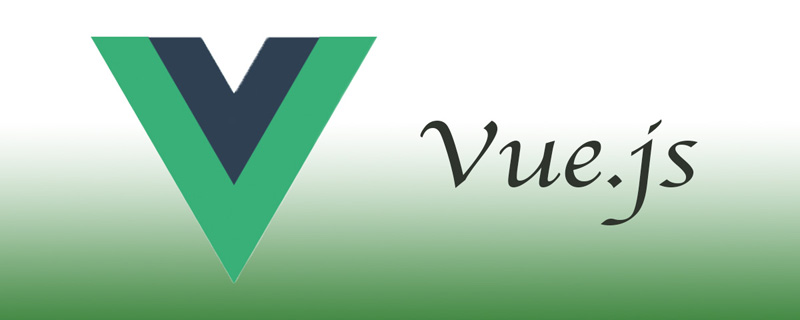What is the meaning of replace in vue
vue中replace的含义是“替换”,可以用于匹配指定的字符串并替换,或者替换跳转时的记录,语法为“str.replace(regexp/substr,replacement)”或者“router.replace(location)”。

本文操作环境:windows10系统、Vue2.9.6版,DELL G3电脑。
vue中replace的含义是什么
vue.js源码replace方法
/**
* Camelize a hyphen-delimited string.
*/
var camelizeRE = /-(\w)/g;
var camelize = cached(function (str) {
return str.replace(camelizeRE, function (_, c) { return c ? c.toUpperCase() : ''; })
});
/**
* Hyphenate a camelCase string.
*/
var hyphenateRE = /\B([A-Z])/g;
var hyphenate = cached(function (str) {
return str.replace(hyphenateRE, '-$1').toLowerCase()
});语法
str.replace(regexp|substr, newSubStr|function)
参数
regexp (pattern)
一个RegExp 对象或者其字面量。该正则所匹配的内容会被第二个参数的返回值替换掉。
substr (pattern)
一个将被 newSubStr 替换的 字符串。其被视为一整个字符串,而不是一个正则表达式。仅第一个匹配项会被替换。
newSubStr (replacement)
用于替换掉第一个参数在原字符串中的匹配部分的字符串。该字符串中可以内插一些特殊的变量名。参考下面的使用字符串作为参数。
function (replacement)
一个用来创建新子字符串的函数,该函数的返回值将替换掉第一个参数匹配到的结果。参考下面的指定一个函数作为参数。
replace文档查看
第一种camelize转换方法:
replace指定一个函数作为参数,通过控制台看他输出的内容
上述可以看出replace通过全局正则匹配,类似于exex和test的lastIndex实现
vue源码中的replace会全局匹配,运行函数体进行newStr的替换
第二种hyphenateRE转换使用特殊变量名$参数
描述
该方法并不改变调用它的字符串本身,而只是返回一个新的替换后的字符串。
在进行全局的搜索替换时,正则表达式需包含 g 标志。
使用字符串作为参数
替换字符串可以插入下面的特殊变量名:
变量名 代表的值
$$ 插入一个 “$”。
$& 插入匹配的子串。
$` 插入当前匹配的子串左边的内容。
$’ 插入当前匹配的子串右边的内容。
$n 假如第一个参数是 RegExp对象,并且 n 是个小于100的非负整数,那么插入第 n 个括号匹配的字符串。提示:索引是从1开始
eg:正则全局匹配非单词边界,在这里匹配连字符+大写字母,然后-$1全局替换
router.replace(location)
设置 replace 属性(默认值: false)的话,当点击时,会调用 router.replace() 而不是 router.push(),于是导航后不会留下 history 记录。即使点击返回按钮也不会回到这个页面。
加上replace: true后,它不会向 history 添加新记录,而是跟它的方法名一样 —— 替换掉当前的 history 记录。
//声明式:
<router-link :to="..." replace></router-link>
// 编程式:
router.replace(...)
//push方法也可以传replace
this.$router.push({path: '/home', replace: true})【相关推荐:《vue.js教程》】
The above is the detailed content of What is the meaning of replace in vue. For more information, please follow other related articles on the PHP Chinese website!

Hot AI Tools

Undresser.AI Undress
AI-powered app for creating realistic nude photos

AI Clothes Remover
Online AI tool for removing clothes from photos.

Undress AI Tool
Undress images for free

Clothoff.io
AI clothes remover

AI Hentai Generator
Generate AI Hentai for free.

Hot Article

Hot Tools

Notepad++7.3.1
Easy-to-use and free code editor

SublimeText3 Chinese version
Chinese version, very easy to use

Zend Studio 13.0.1
Powerful PHP integrated development environment

Dreamweaver CS6
Visual web development tools

SublimeText3 Mac version
God-level code editing software (SublimeText3)

Hot Topics
 How to use echarts in vue
May 09, 2024 pm 04:24 PM
How to use echarts in vue
May 09, 2024 pm 04:24 PM
Using ECharts in Vue makes it easy to add data visualization capabilities to your application. Specific steps include: installing ECharts and Vue ECharts packages, introducing ECharts, creating chart components, configuring options, using chart components, making charts responsive to Vue data, adding interactive features, and using advanced usage.
 The role of export default in vue
May 09, 2024 pm 06:48 PM
The role of export default in vue
May 09, 2024 pm 06:48 PM
Question: What is the role of export default in Vue? Detailed description: export default defines the default export of the component. When importing, components are automatically imported. Simplify the import process, improve clarity and prevent conflicts. Commonly used for exporting individual components, using both named and default exports, and registering global components.
 How to use map function in vue
May 09, 2024 pm 06:54 PM
How to use map function in vue
May 09, 2024 pm 06:54 PM
The Vue.js map function is a built-in higher-order function that creates a new array where each element is the transformed result of each element in the original array. The syntax is map(callbackFn), where callbackFn receives each element in the array as the first argument, optionally the index as the second argument, and returns a value. The map function does not change the original array.
 What are hooks in vue
May 09, 2024 pm 06:33 PM
What are hooks in vue
May 09, 2024 pm 06:33 PM
Vue hooks are callback functions that perform actions on specific events or lifecycle stages. They include life cycle hooks (such as beforeCreate, mounted, beforeDestroy), event handling hooks (such as click, input, keydown) and custom hooks. Hooks enhance component control, respond to component life cycles, handle user interactions and improve component reusability. To use hooks, just define the hook function, execute the logic and return an optional value.
 validator method in vue
May 09, 2024 pm 04:09 PM
validator method in vue
May 09, 2024 pm 04:09 PM
The Validator method is the built-in validation method of Vue.js and is used to write custom form validation rules. The usage steps include: importing the Validator library; creating validation rules; instantiating Validator; adding validation rules; validating input; and obtaining validation results.
 How to disable the change event in vue
May 09, 2024 pm 07:21 PM
How to disable the change event in vue
May 09, 2024 pm 07:21 PM
In Vue, the change event can be disabled in the following five ways: use the .disabled modifier to set the disabled element attribute using the v-on directive and preventDefault using the methods attribute and disableChange using the v-bind directive and :disabled
 How to introduce echarts in vue
May 09, 2024 pm 04:39 PM
How to introduce echarts in vue
May 09, 2024 pm 04:39 PM
There are three ways to introduce ECharts into Vue.js: Install through npm Introduce through CDN Use the Vue ECharts plug-in Detailed steps: Create a chart container Introduce ECharts Initialize the chart instance Set chart options and data destroy chart instance (optional)
 Can calculated properties in Vue have parameters?
May 09, 2024 pm 06:24 PM
Can calculated properties in Vue have parameters?
May 09, 2024 pm 06:24 PM
Computed properties in Vue can have parameters, which are used to customize calculation behavior and transfer data. The syntax is computedPropertyWithArgs(arg1, arg2) { }. Parameters can be passed when used in templates, but the parameters must be responsive and cannot modify the internal state. .






